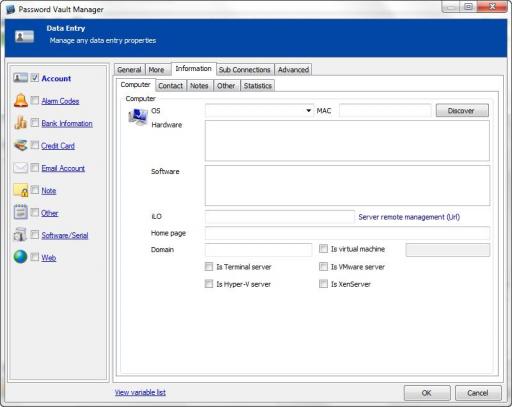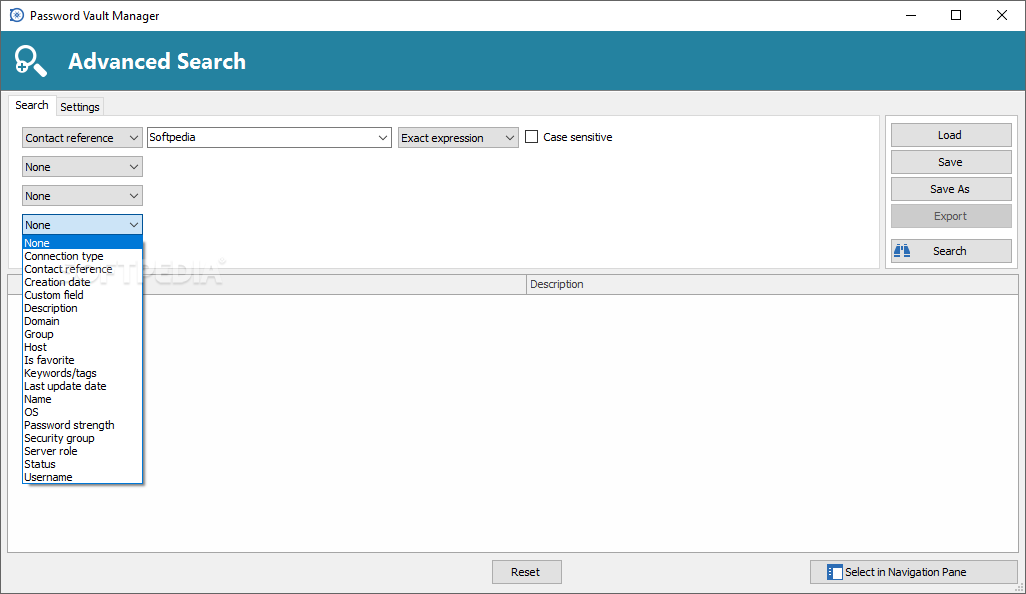


- #Vault password manager app full#
- #Vault password manager app Offline#
- #Vault password manager app windows#
You can use long and complex passwords that you don't have to remember for every site and skip the hassle of typing a complex string every single time.

When combined with sync, you can get all your passwords on all your devices and it's easy to use a different password for every website. Microsoft Edge’s password manager is convenient and easily distributed, which contributes to improved security. Industry reports show that 80% of online incidents are related to phishing, and more than 37% of untrained users fail phishing tests. And because the password manager will only autofill passwords on the sites to which they belong, users are less likely to fall for a phishing attack. Users who can rely on the Microsoft Edge's in-built password manager can (and do) use stronger and unique passwords more because they don’t need to remember them all and type them as often. Do you recommend storing passwords in Microsoft Edge?
#Vault password manager app full#
For example, if an attacker finds a way to steal files from the disk without the ability to execute code or has stolen a laptop that isn’t protected with Full Disk Encryption, Local Data Encryption will make it harder for the thief to get the stored data.
#Vault password manager app windows#
However, programs like Microsoft Defender SmartScreen and OS-level protections like Windows Defender are designed to ensure that the device isn't compromised to start with.ĭespite its inability to protect against full-trust malware, Local Data Encryption is useful in certain scenarios. Internet browsers (including Microsoft Edge) aren’t equipped with defenses to protect against threats where the entire device is compromised due to malware running as the user on the computer. Why encrypt data locally? Why not store the encryption key elsewhere, or make it harder to obtain? The attacker's code, running as your user account, can do anything you can do. If your computer's infected with malware, an attacker can get decrypted access to the browser's storage areas. However, physically local attacks and malware are outside the threat model and, under these conditions, encrypted data would be vulnerable. This attack vector is often featured in blogs as a possible 'exploit' or 'vulnerability', which is an incorrect understanding of the browser threat model and security posture. On Linux, the storage area is Gnome Keyring or KWalletĪll these storage areas encrypt the AES key using a key accessible to some or all processes running as the user. The profile’s encryption key is protected using Chromium's OSCrypt and uses the following platform-specific OS storage locations: The way to decrypt another user's passwords is if that user were logged on and the attacker had the user’s password or has compromised the domain controller.
#Vault password manager app Offline#
Even if an attacker has admin rights or offline access and can get to the locally stored data, the system is designed to prevent the attacker from getting the plaintext passwords of a user who isn't logged in. The Microsoft Edge password manager encrypts passwords so they can only be accessed when a user is logged on to the operating system. Although not all of the browser’s data is encrypted, sensitive data such as passwords, credit card numbers, and cookies are encrypted when they are saved. This technique is called local data encryption. They're encrypted using AES and the encryption key is saved in an operating system (OS) storage area. Microsoft Edge stores passwords encrypted on disk. How are passwords stored in Microsoft Edge and how safe is this approach? This article applies to Microsoft Edge version 77 or later.


 0 kommentar(er)
0 kommentar(er)
